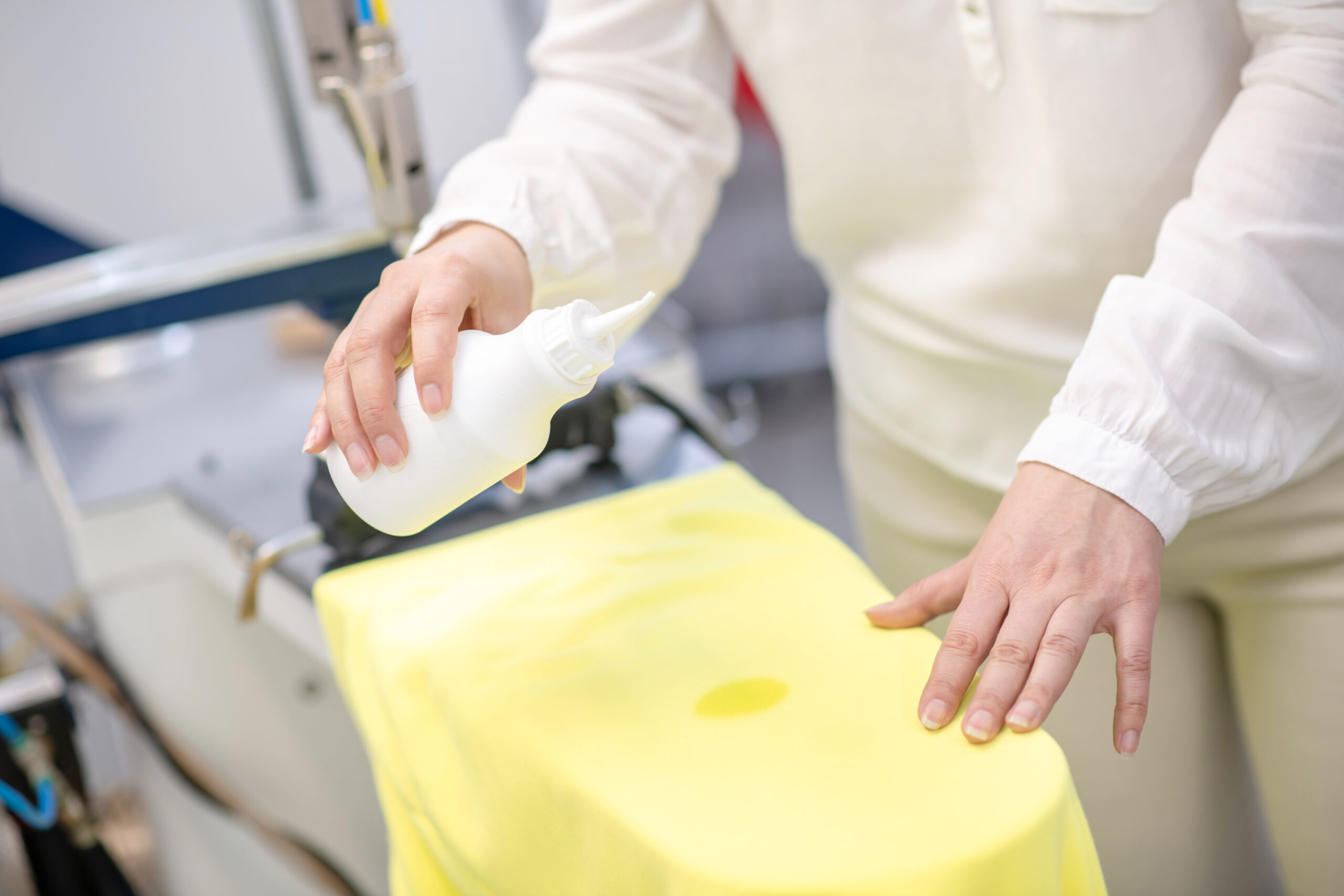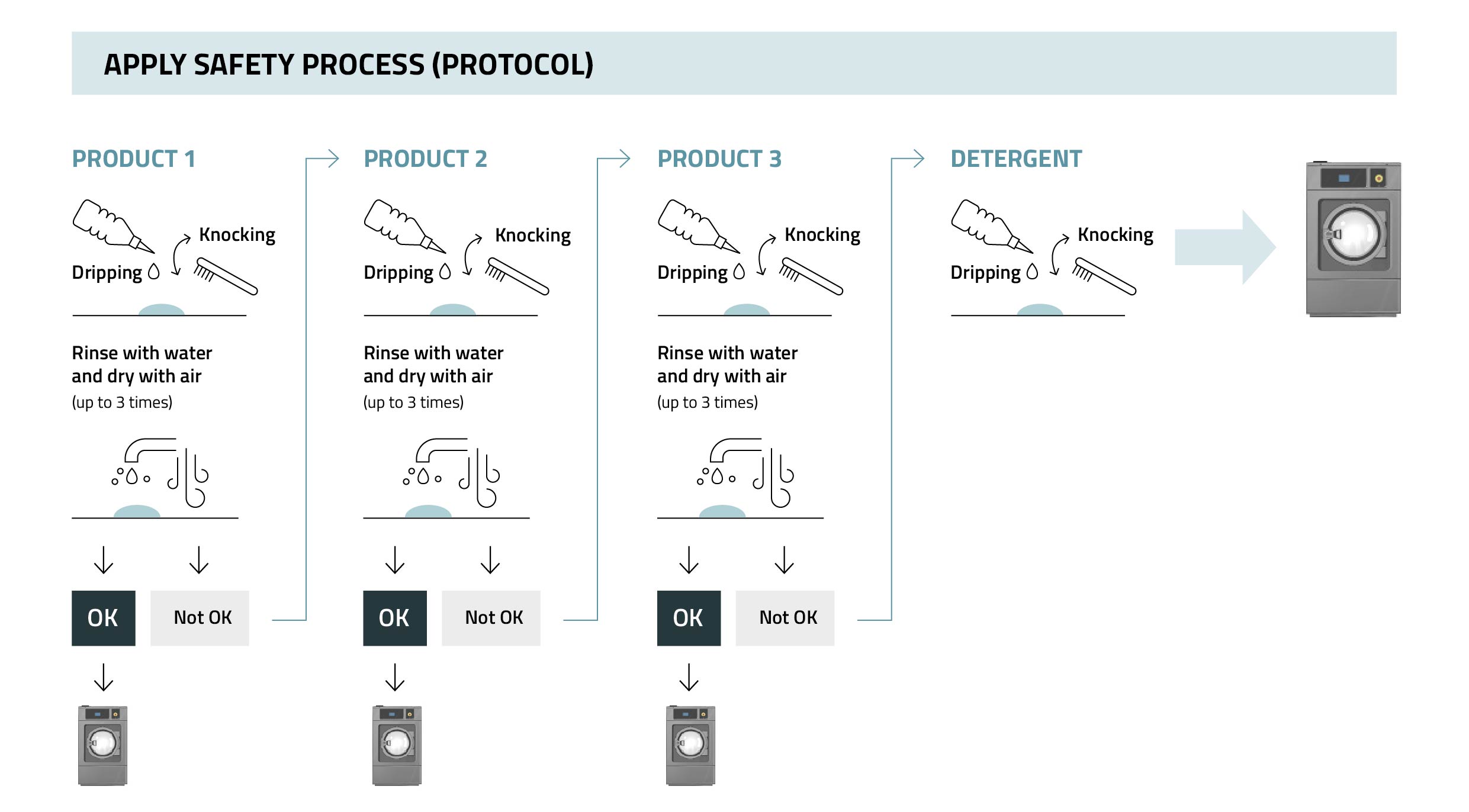
Pre-spotting is one of the most know-how and experience-intensive tasks in the dry cleaning/laundering trade. It has not always been referred to as “the art of removing stains” for nothing. The purpose of removing stains is simply to ensure the best possible results for any type of cleaning, which is why performing this the right way is so important.
This used to be a highly specialised job since they produced their own products to remove fabric stains. Nowadays, companies like ours (“Seitz”) have made it easier to access these special products, and have made this process and way of working simpler for greater success and minimal mistakes.
We are always trying to remove stains without damaging the fabric where they are momentarily situated.
The use of specialty products on certain materials is going up thanks to general purpose stain removal detergents being employed, whose enzymes and degreasers will help professionals remove that “invisible dirt”.
This is a standardised task, with even standard operating procedures (SOP) in place, making for a less strenuous undertaking. That being said, there will always be tough stains, and even cases where past mistakes have caused stains to become enmeshed in the fabric in such a way that they are now part of it and may not be removed.
This becomes complex due to the fact that most of the time we are unaware of the stain’s structure, type, how long it has been there, and even the fabric where it is situated. Obviously some fabrics are more delicate than others, and that determines the job and the use of certain products for removing stains. In general terms, stains are never or seldom made up of one component, which means we need to apply the right product (follow procedures) to avoid this stain remaining on the garment forever (for instance, a protein stain treated using a product with an acidic pH).

Hence the need for an SOP to be able to remove the highest number of these stains that nobody wants to walk around with.
We can break down the structure of stains into three major groups:
1 – spots of grease, paint and ink. Removed using solvents.
2 – spots of protein and albumen. Organic.
3 – vegetable ink and tannin stains, in other words, wine, tea, coffee, tobacco and grass.
Here we will use the small wet cleaning line called Hydret.
This is why we decided to create products for this incorporating a number system (1-2-3) along with distinctly coloured packaging to make them easier to recognize.
To remove grease and paint Hydret 1 Purple was applied.
To remove protein Hydret 2 Red was applied.
To remove tannins Hydret 3 Orange was applied.
The SOP has been simplified so even people with no experience can follow along, and it is as easy as using the products in their numerical order 1-2-3.
Diving into detail now, what follows is a description of each product’s composition and how to mix or not mix based on the product.

We started by stating that stains are very rarely only made up of one component and we can use a special pre-spotting product. This is why we need to try our best to apply/follow the SOP in order to not set the stain in the fabric permanently.
Spot remover number 1 (Hydret 1 PURPLE) is used for removing spots of grease, makeup, ink, paint, lacquer, and more. Chemical-solvent based with a neutral pH.
Spot remover number 2 (Hydret 2 RED) is designed to remove organic spots, proteins from fish, meat, vegetables, blood, albumen, dairy, etc. It has an alkaline pH.
Spot remover number 3 (Hydret 3 ORANGE) is used to remove spots of vegetable ink and tannin stains such as wine, tea, coffee and tobacco. It has an acidic pH.
For all those newcomers our main goal here is to never have them set a stain in the fabric.
Another point to keep mind is that often not all spots can be completely removed. This is due to a variety of reasons, but the main one we need to focus on are the limitations of the fabric where the spot is located as not all fabrics have the same physical consistency (fabric structure) or colour. The length of time the spot has been on the fabric also needs to be considered, as stains can turn to rust over long periods, making the task much harder. Or, the spot was treated the wrong way beforehand, causing it to set in with no possibilities of removal.
Jose Luis Alvarez – Seitz

0 Comments